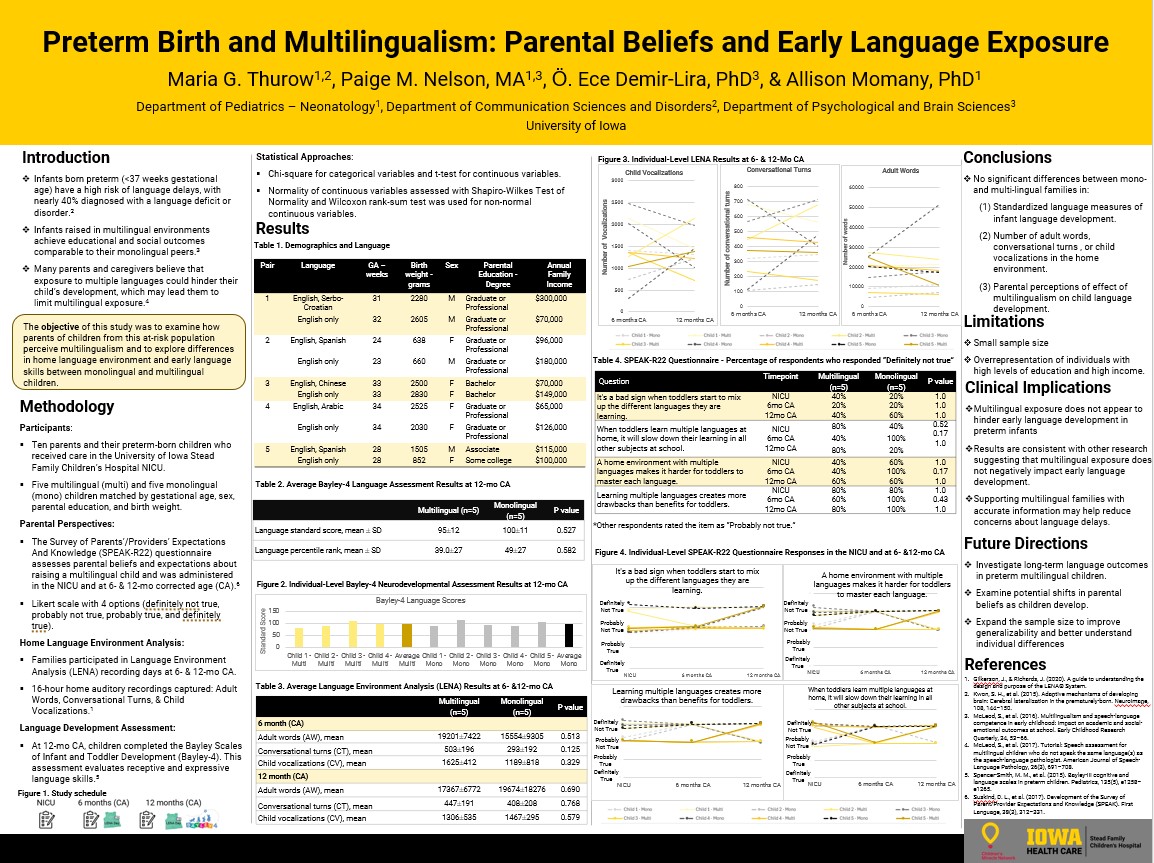

Background: Infants born preterm (<37 weeks gestational age) are at high risk for language delays, with nearly 40% diagnosed with a language deficit or disorder. Early language skills are critical for later literacy and academic achievement. Research shows that infants raised in multilingual environments achieve educational and social outcomes comparable to their monolingual peers. Additionally, multilingual exposure may enhance cognitive skills and foster an enhanced sense of culture and community. However, despite these benefits, many parents and caregivers hold a monolingual mindset, believing that exposure to multiple languages could hinder their child.
Given that preterm infants are particularly vulnerable to language delays, this study examines how parents of children from this at-risk population perceive multilingualism. Additionally, we examine how home language environment and early language skills differ between monolingual and multilingual children.
Methods: This study includes ten parents and their children who were born preterm and received care at the University of Iowa Children’s Hospital. Five multilingual children were matched with five monolingual children based on gestational age, sex, parental education, and birth weight.
The Survey of Parents' and Providers' Expectations and Knowledge (SPEAK-R22) questionnaire was administered to parents in the NICU, at 6 months corrected age (CA), and at 12 months CA. This questionnaire evaluates parental beliefs and expectations regarding raising a child in a multilingual environment.
Additionally, families participated in Language Environment Analysis (LENA) recording days at 6 months CA and 12 months CA. During these days, 16 hours of the home auditory environment was recorded, providing data on the number of adult words (AW), conversational turns (CT), and child vocalizations (CV) throughout the recording day.
At 12 months CA children also completed the Bayley Scales of Infant and Toddler Development (Bayley-4), a standardized assessment that evaluates receptive and expressive language skills.
Results: SPEAK-R22 items were analyzed, and no significant differences were found between monolingual and multilingual infants at any time point.
LENA results, including AW, CT, and CV, were compared between groups, with no significant differences emerging.
Preliminary comparisons of Bayley-4 Language standard scores also revealed no group differences.
Discussion: Findings suggest no differences in early language measures between monolingual and multilingual infants in the first year. Parental perceptions of multilingualism remain stable. While the small sample limits generalizability, results align with research showing no negative impact of multilingual exposure. Future studies should explore long-term language outcomes and shifts in parental beliefs.